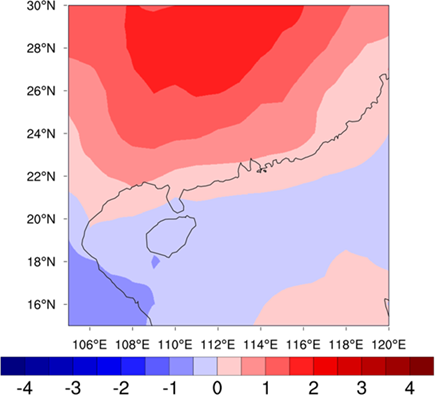Seasonal Forecast for Winter 2022/23
29 November 2022
In the past month or so, La Niña continued with colder-than-normal sea surface temperatures over the central and eastern equatorial Pacific. Based on the latest oceanic observations as well as forecasts by a number of climate models around the world, the La Niña is expected to persist for the next couple of months. In the past, the chance of La Niña bringing normal to below-normal winter (December – February) temperature to Hong Kong was generally higher. However, against the backdrop of climate warming, winter temperatures in Hong Kong exhibit a significant long-term rising trend. In the past two winters, temperatures in Hong Kong were normal to above normal even under the influence of La Niña. The majority of climate models around the world forecast normal to above-normal temperature over southern China for winter 2022/23. Hence, the temperature of winter 2022/23 in Hong Kong is expected to be normal to above normal.
Although the average winter temperature in Hong Kong is expected to be normal to above normal, day-to-day fluctuations in weather and temperature can still be quite large with occasional cold weather. It is expected that the number of cold days in winter 2022/23 would be normal to below normal. Please refer to the latest local weather forecast and 9-day weather forecast issued by the Hong Kong Observatory. Cold weather refers to temperature falling to 12℃ or below. The normal range of winter cold days is 9-17.
The impact of La Niña on winter rainfall in Hong Kong is not significant. The majority of climate models predict that there will be less moisture transport to the south China coast for winter 2022/23. Hence, the rainfall of winter 2022/23 in Hong Kong is expected to be normal to below normal.
The seasonal forecast for Hong Kong is available at this website.

Temperature forecast chart for winter 2022/23 based on the average of a few global climate models. The unit of values displayed in the legend is standard deviation (σ). Blue is negative anomaly, indicating temperature below normal. Red is positive anomaly, indicating temperature above normal.